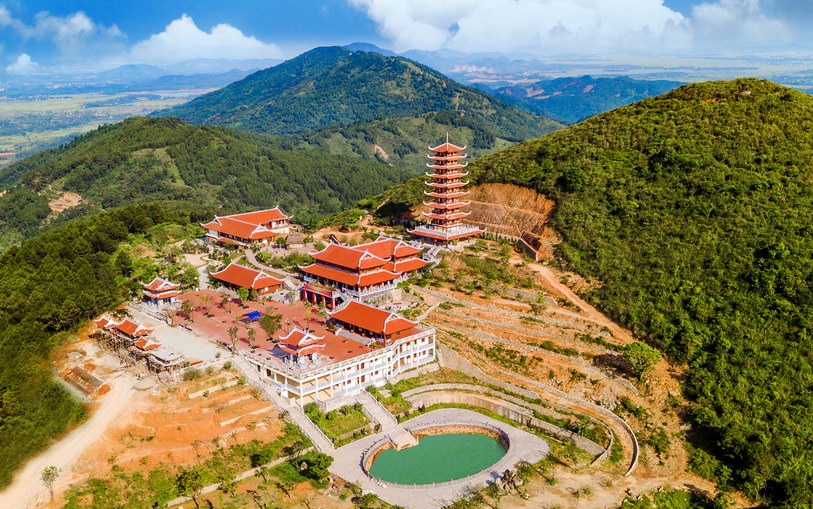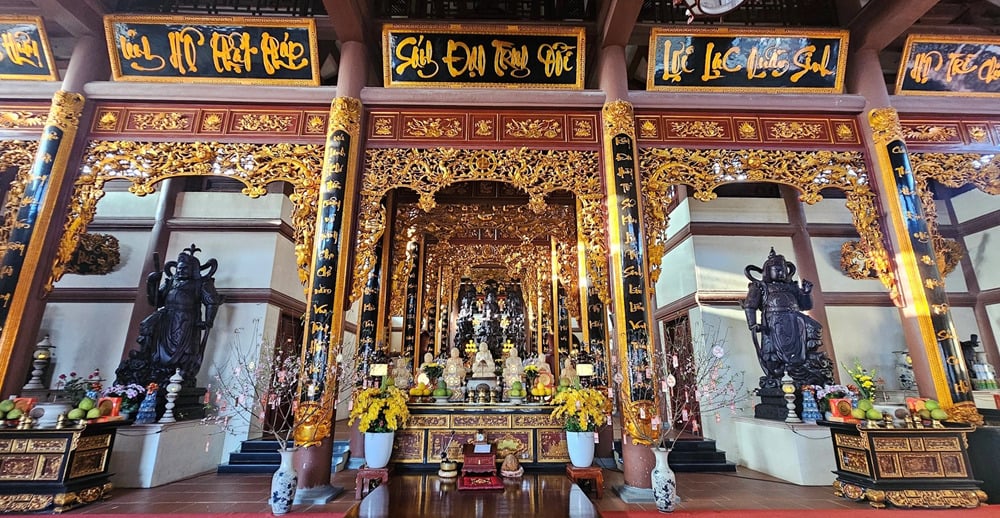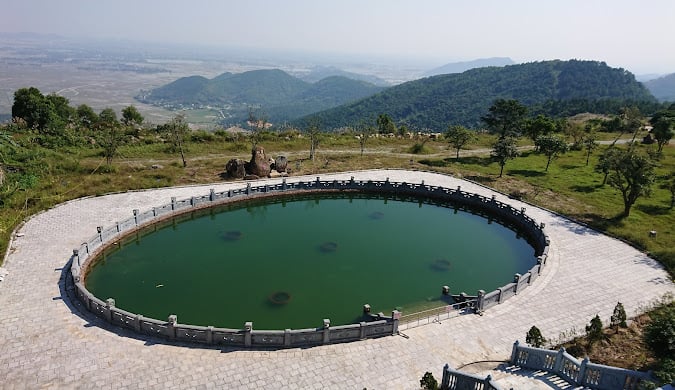Dai Tue Pagoda
1. Overview
Dai Tue Pagoda is one of the most famous and spiritually significant pagodas in Nghe An province, located on Mount Dai Hue in Nam Anh commune, Nam Dan district. The pagoda is not only a place of worship but also a destination for visitors who seek peace, panoramic views, and cultural enrichment.
2. Historical and Cultural Significance
Dai Tue Pagoda is dedicated to Goddess Dai Tue, who is believed to be a guardian spirit associated with wisdom and national prosperity. The site holds deep historical value as it is connected to the legendary Emperor Quang Trung (Nguyen Hue), who is said to have visited the mountain during his campaign to the North.
According to local legends, the pagoda was originally built hundreds of years ago but was later destroyed and rebuilt multiple times. The current structure is part of a large-scale restoration project, completed in the early 21st century, aimed at preserving the spiritual heritage of the region.
3. Architecture and Design
Dai Tue Pagoda is built in a traditional Vietnamese Buddhist architectural style, harmonizing with the surrounding natural landscape. The complex includes:
-
Tam Quan Gate (Three-Entrance Gate): A majestic gateway that symbolizes the passage from the ordinary world into the sacred.
-
Main Hall (Chính điện): Where statues of Buddha and the Goddess Dai Tue are worshiped.
-
Bell Tower and Drum Tower: Traditional structures used in Buddhist ceremonies.
-
Statue Garden: Featuring large statues of Bodhisattvas and various deities.
-
Scenic Platforms: Offering breathtaking views of the Lam River, rice fields, and distant mountain ranges.
The entire area is surrounded by pine trees and fresh air, creating a peaceful and contemplative atmosphere for visitors.
4. How to Get There
The pagoda is located about 20 kilometers southwest of Vinh City. Visitors can travel by car or motorbike along National Highway 46, then follow signs up to Mount Dai Hue. From the parking area, you can either hike up the scenic mountain path or take a shuttle service to the main temple complex.
5. Festivals and Activities
Dai Tue Pagoda attracts thousands of pilgrims and tourists, especially during the Lunar New Year and Buddhist holidays like Vesak. During these times, visitors come to:
-
Pray for peace, health, and prosperity.
-
Take part in incense-offering ceremonies.
-
Listen to Buddhist teachings and chants.
-
Enjoy vegetarian food offered by the pagoda.
The area is also popular for sightseeing and meditation, offering a balance of spirituality and nature.
6. Tips for Visitors
-
Dress modestly and respectfully.
-
Avoid loud noises and maintain a peaceful demeanor.
-
Bring water and wear comfortable shoes if you plan to hike.
-
Early morning visits are ideal to enjoy the sunrise and fresh air.
7. Conclusion
Dai Tue Pagoda is more than just a religious site; it is a cultural and historical symbol of Nghe An province. Whether you're a pilgrim, a history enthusiast, or a nature lover, a visit to this sacred place will surely leave you with a sense of peace and inspiration.




